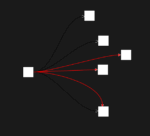Imagine standing on the edge of a data goldmine, uncertain how to tap into its riches. You sense the vast potential, but your instincts alone aren’t enough to navigate the complexities of modern analytics. That’s precisely where our data-focused software consulting LLC steps in—to transform your hunches and intuition into a robust, predictive strategy. Many of our clients come to us having relied for years on gut feelings and firsthand market experience. While their expertise is invaluable, the shortcomings become obvious as they grow: too much guesswork, too little systematic insight. This blog post is an exploration of that moment—the tipping point where an organization transitions from human instinct to powered-by-insight decision-making and discovers that data is more than just an afterthought. It’s the key to fueling growth, innovation, and competitive differentiation.
Data is a living, breathing asset that can reveal hidden trends, predict consumer behavior, and streamline operations. But the journey from gut feelings to predictive models is as much about organizational change as it is about technology. We at our consulting firm focus on creating a smooth pivot that blends your internal expertise with advanced analytics capabilities. The result? Data-backed predictions, interactive dashboards, and evidence-based roadmaps that lead to more confident decision-making. In this article, we’ll walk through the critical phases of this transition, shedding light on the strategies we employ to harness data effectively. Whether you’re just beginning to collect data or seeking to optimize your artificial intelligence (AI) pipeline, our experience shows that every leap forward starts with the decision to leave guesswork behind.
Defining the Data-Driven Mindset
Too often, organizations believe that data analytics is advanced mathematics reserved for a specialized team behind closed doors. Yet, the shift to a data-driven mindset is a company-wide effort—everyone from marketing to operations to finance has a role to play. This mindset begins with recognizing data as a core strategic asset, equally important as brand equity or team morale. While instincts can guide initial business tactics, the turning point emerges when leadership asks, “What can hard evidence tell us that we don’t already know?” Our own journey with clients starts there, helping them realize that the raw insights within their spreadsheets, online platforms, and customer interactions can be transformed into operational advantages.
Cultivating this mindset requires more than a new job title or software tool. It involves a willingness to question assumptions through hypothesis testing, modeling, and experimentation. At our firm, we draw on comprehensive data services to support your organizational evolution. From data visualization and BI dashboards to AI-driven predictions and machine learning solutions, our offerings guide you through each stage of maturity. We also aim to instill best practices in data governance and ethics from day one, ensuring that insights are accurate, fair, and considerate of privacy. For those looking to explore data visualization in greater depth, consider our overview of data visualization consulting services to learn how real-time dashboards and analytics can transform raw data into compelling, actionable stories. Here, the chief difference is that your gut feeling is no longer the sole driver—quantifiable metrics, historical trends, and advanced forecasting form the backbone of sound strategic decisions. Organizations that embrace this new mindset consistently outperform those that cling to intuition alone. By weaving analytics into every department, you create a culture that sees data not as a static record, but as a dynamic resource for ongoing innovation.
The Roadmap for Implementation
Taking on a data-driven approach isn’t just about technology adoption; it’s about laying a foundation that supports continuous improvement. The first step generally begins with an audit of your existing data infrastructure. This involves identifying all sources—website traffic, social media interactions, customer service logs, point-of-sale systems, and more. If you’re collecting data from external platforms like Instagram, you might find it inefficient to do manual exports or rely on spreadsheets. That’s why we often guide clients toward solutions such as Send Instagram Data to Google Big Query Using Node.js, which automates the gathering of social intelligence in real time.
Once your sources are identified and the data is consolidated, our focus shifts to cleaning and preparing the information. A dataset riddled with duplicates, missing values, or outdated metrics can mislead decision-makers. Through automatic data pipelines and quality checks, we ensure that your analytics stack rests on a solid, trustworthy base. Next comes the modeling phase, where we deploy algorithms tailored to your business question—whether it’s customer segmentation, forecasting demand, or spotting supply chain inefficiencies. Along this journey, dashboards and visualization tools become instrumental in explaining insights to diverse departments, transforming complex data into easy-to-digest visuals. Finally, we align these insights with strategic objectives. If your company aims to expand into new markets, we can seamlessly weave insights from your web analytics, social sentiment, and operational data to predict the best course of action. Real-world success demands more than a single analytics project—it craves iterative updates. Every time an insight is revealed, a new question arises, fueling a virtuous cycle of discovery, analysis, and action. By charting this roadmap, we help clients pivot away from trusting only instincts and move toward systematic, evidence-based strategies.
Crafting Advanced Analytics
Transitioning from descriptive to predictive analytics demands a refined approach. While descriptive analytics explains what has already happened—like “sales dipped last quarter” or “website engagement soared”—predictive analytics attempts to forecast what will happen next. Adopting an advanced analytics framework means identifying the methods, techniques, and technologies most suited to your unique challenges. Perhaps your marketing team needs to forecast lead conversions, or your logistics division aims to optimize shipping routes. We tailor each model to specific objectives, using machine learning algorithms and statistical methods that yield accurate, actionable insights.
Implementing predictive models also involves an ongoing feedback cycle to maintain relevance amid shifting market dynamics. Data drift—a phenomenon where variables change over time—can erode model performance unless you’re conducting regular evaluations. Our consultancy dev3lop.com doesn’t just help with the initial setup; we also coach your team on best practices for continuous improvement. For instance, if your organization deals with user authentication or sign-in data, integrating a specialized pipeline—such as the approach in Send Auth0 Data to Google Bigquery Using Node.js—can connect real-time user data to your predictive models. In doing so, you gain a clear view of where the user journey might lead and how to best cater to those evolving needs. Predictive models are not a magic bullet; rather, they are instruments that can refine internal hypotheses and drive data-backed experimentation. By aligning advanced analytics with broader strategic goals, we enable decision-makers to move steadfastly beyond gut feelings, arming them with a deep, empirical understanding of emerging possibilities.
Ensuring Ethics and Sustainability
As organizations lean more heavily on data for decision-making, ethical considerations come into sharp focus. Data analytics opens the door to unprecedented insights—even into sensitive areas like consumer preferences, personal habits, or employee productivity. While this intelligence can offer significant competitive advantages, the stakes are high. Mishandling data leads to privacy breaches, brand distrust, and potentially regulatory fines. This is why we emphasize building transparent processes and robust governance frameworks right from the start. A data-driven mindset should never ignore the societal and human implications that come with analytics. If you’d like to know more about striking this balance, take a look at Ethical Considerations of Data Analytics, which delves deeper into issues of privacy, bias, and responsible data usage.
Beyond privacy, the sustainability and fairness of your models are crucial for long-term success. Biased models may inadvertently favor certain demographics, which can lead to a damaging brand reputation and missed opportunities. We add checks and balances throughout the data lifecycle—from initial collection and model building to real-time validation. Ethical data usage is not only a moral imperative but a strategic advantage. Businesses that proactively address these issues foster stronger customer loyalty, reduced regulatory risks, and a healthier organizational culture. Additionally, ethical oversight encourages more accurate predictive models. By ensuring every dataset is accurate, diverse, and representative, the models become more reliable, and the decisions derived from them hold true under scrutiny. In short, acknowledging the ethical dimension is central to building a sustainable analytics practice that benefits not just the bottom line, but all stakeholders.
Conclusion: The Ever-Evolving Future of Data
Reaching the summit of predictive decision-making doesn’t signal the end of the journey. Much like technology itself, your data strategies need continuous refinement, agile thinking, and regular re-evaluation to remain effective. Business landscapes evolve, consumer preferences shift, and new data sources arise every day. By embracing an iterative, flexible approach, your organization can capitalize on these shifts rather than be disrupted by them. Over time, your analytics endeavors will expand beyond descriptive snapshots of the past, transforming into dynamic models that anticipate next moves and adapt to changes on the fly.
Our consulting team has guided numerous organizations along this path—each client’s story is unique, but the underlying principle is universal: when you shift from gut-driven decisions to data-driven insights, you equip every unit of your business to learn faster and respond smarter. Whether it’s setting up a new pipeline to capture hitherto untracked social data, scaling your predictive models, or exploring how to ethically manage sensitive information, the possibilities are boundless. By following a thoughtful roadmap—data identification, consolidation, cleansing, modeling, and ethical oversight—organizations develop an analytics infrastructure built to last. If you’re ready to accelerate that transition, we’re here to serve as your technical strategist, innovation partner, and guide to achieving sustainable success. Embrace analytics as a strategic imperative, and watch as your business decisions evolve from educated guesses into predictive intelligence.

























